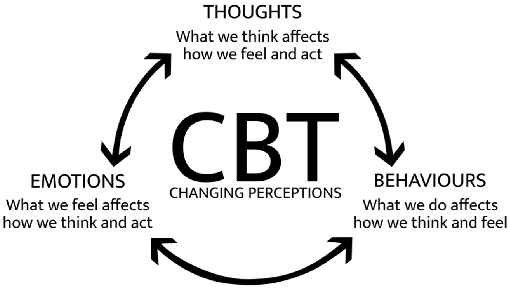Cognitive Behavior Therapy techniques have been developed to help people change unhelpful thought patterns, self-defeating behavior, and dysfunctional mood episodes. Among all of the different kinds of psychological treatments, cognitive behavior therapy has repeatedly demonstrated the highest rates of effectiveness and longest-lasting results. The following cognitive behavior therapy techniques are among the most commonly used during the course of treatment.

Cognitive Restructuring Techniques: Cognitive restructuring is a cognitive behavior therapy technique aimed at helping people identify thinking patterns responsible for negative moods and ineffective behavior. There are numerous techniques employed during cognitive restructuring. The most common technique is tracking dysfunctional thoughts on a thought record form, and devising healthier, more psychologically flexible patterns of thinking.

Graded Exposure Assignments: Exposure is a cognitive behavior therapy technique that helps people systematically approach what they fear. Generally, fear causes people to avoid situations. Unfortunately, avoiding what people fear is what maintains feelings of fear and anxiety. Through systematic exposure, people master feared situations one-by-one, and then tackle increasing difficult exposure assignments. Exposure is one of the most effective psychological treatments that exist, having a 90% effectiveness rate with some anxiety disorders.

Activity Scheduling: Activity scheduling is a cognitive behavior therapy technique designed to help people increase behaviors they should be doing more. By identifying and scheduling helpful behaviors, such as meditating, going for a walk, or working on a project, it increases the likelihood of their getting done. This technique is especially helpful for people who do not engage in many rewarding activities due to depression, or people who have difficulty completing tasks due to procrastination.
Successive Approximation: This cognitive behavior therapy technique works for people who have difficulty completing a task, either due to lack of familiarity with the task, or because the task feels overwhelming for some reason. The technique works by helping people master an easier task that is similar to the more difficult task. It’s akin to practicing addition and subtraction before learning long division. Once you are practiced at addition and subtraction, long division isn’t as daunting.
Mindfulness Practice: Mindfulness is a cognitive behavior therapy technique borrowed from Buddhism. The goal of mindfulness is to teach people to disengage from ruminating or obsessing about negative things and redirect their attention to what is actually happening in the present moment. Mindfulness is the subject of a lot of new research in psychology and represents the cutting edge of psychotherapy practice.
Skills Training: A lot of people’s problems result from not having the appropriate skills to achieve their goals. Skills training is a cognitive behavior therapy technique implemented in remedying such skills deficits. Common areas for skills training include social skills training, communication training, and assertiveness training. Usually, skills training takes place through direct instruction, modeling, and role-plays.
Source
Plagiarism is the copying & pasting of others work without giving credit to the original author or artist. Plagiarized posts are considered fraud and violate the intellectual property rights of the original creator.
Fraud is discouraged by the community and may result in the account being Blacklisted.
If you believe this comment is in error, please contact us in #appeals in Discord.
Hi! I am a robot. I just upvoted you! I found similar content that readers might be interested in:
http://cogbtherapy.com/cognitive-behavior-therapy-techniques